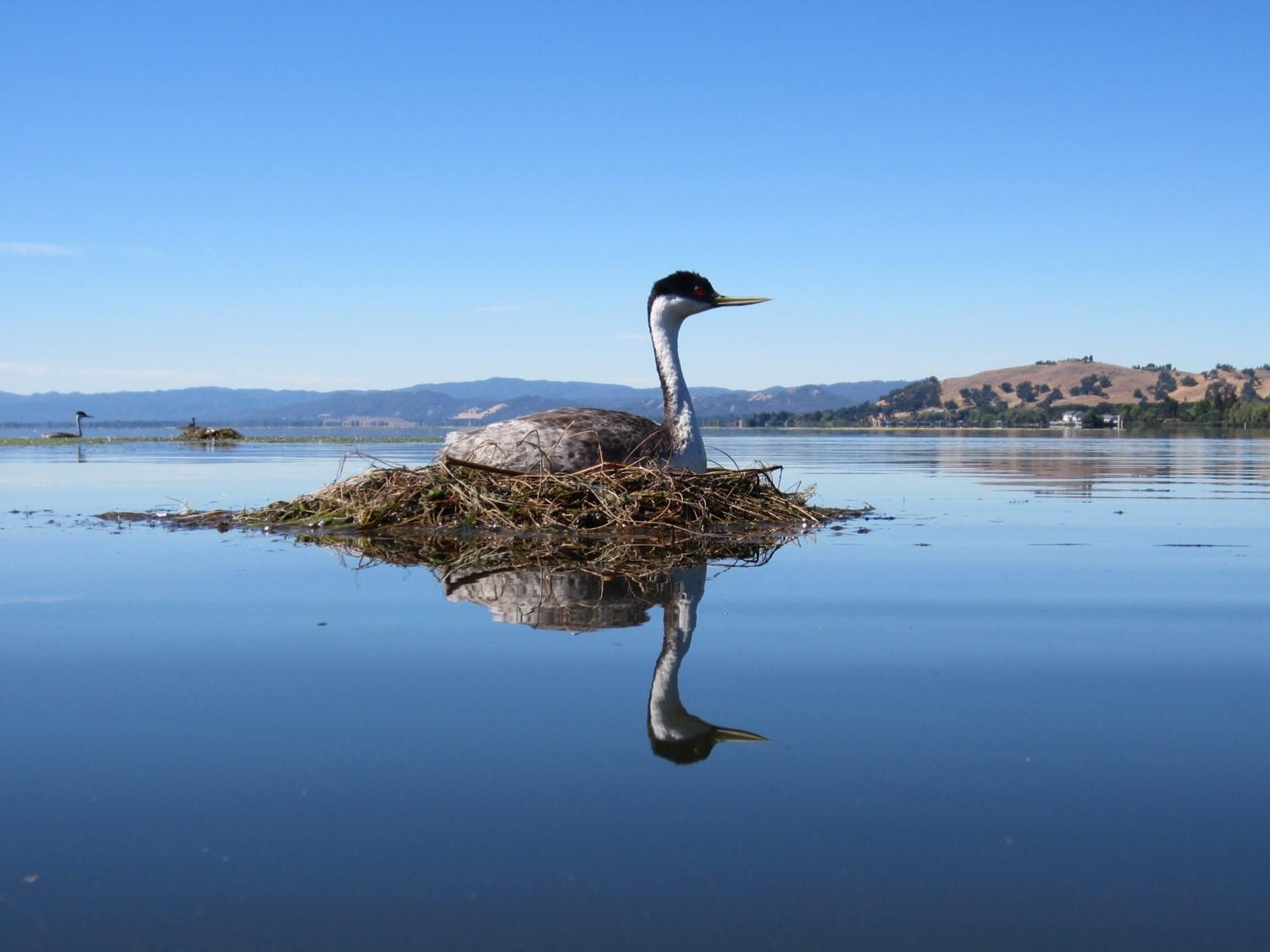In the early 2000's both the Western and Clark's grebes weren't doing too hot. Oil from a major spill over fifty years prior seeped into grebe territory and severely crippled the diving bird’s population. A mitigation fund was set-up for providing relief to the species most affected. Audubon California was able to receive a bit from this pot. Thus, the Grebe Conservation Project formed.
The project is a partnership between Audubon California and three chapters: Plumas, Altacal, and Redbud Audubon Societies. Our collective mission is to protect and grow the grebe breeding populations at several study sites through public outreach, education, and monitoring.
Reflecting on the last breeding season we can confidently say that we have been carrying out our mission successfully despite challenges inherent in working with nature.
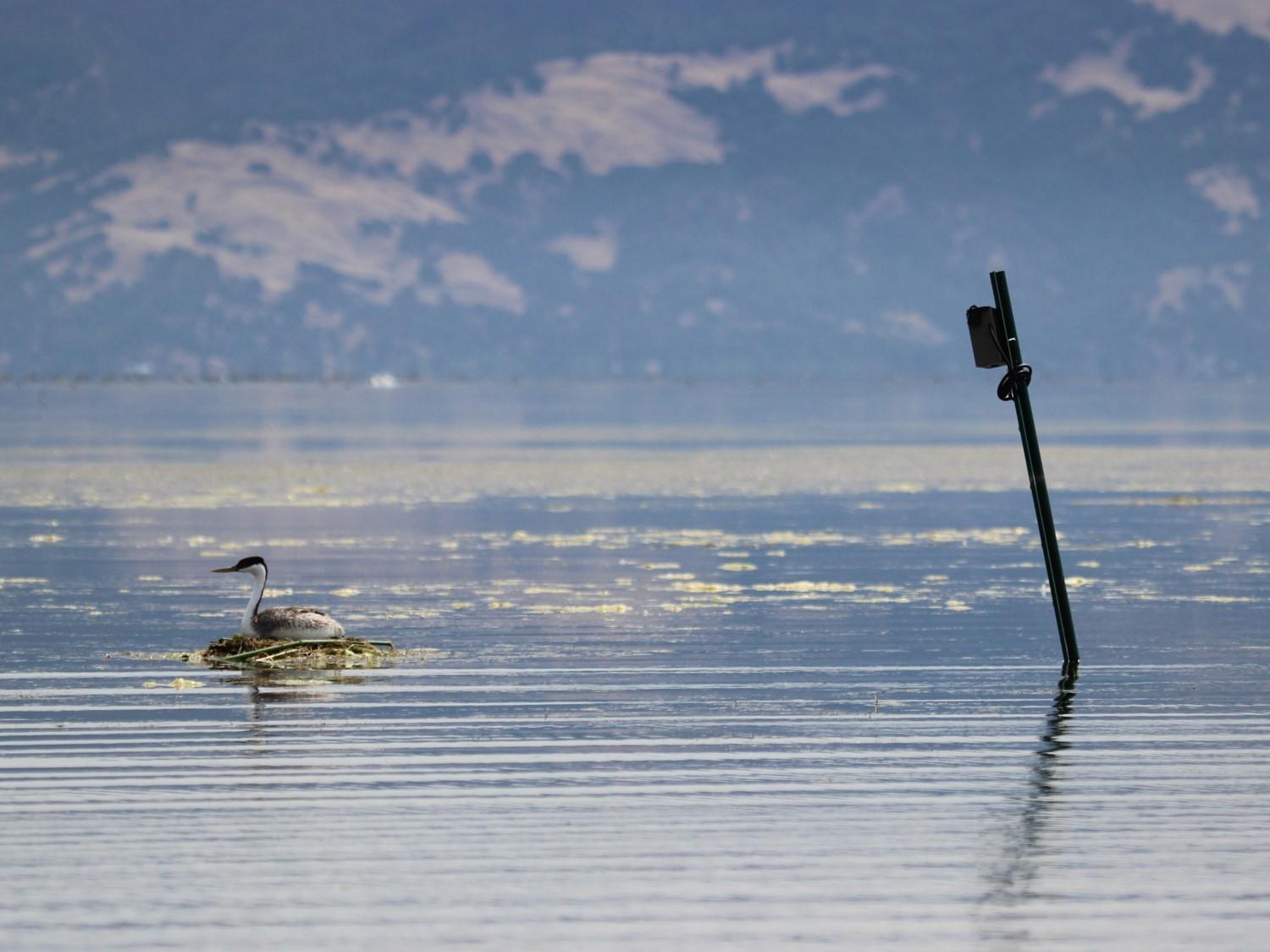
As you may know, grebes are vulnerable to a variety of disturbances besides oil. Be it Jet-Skiing visitors tearing through colonies, or threats from opportunistic predators like crows who occasionally take a break from picking at abandoned picnic lunches to feast on grebe eggs. Heavy winds even generate choppy waters where waves destroy nests and wash eggs ashore. We have our hands full, but who said conservation was easy?
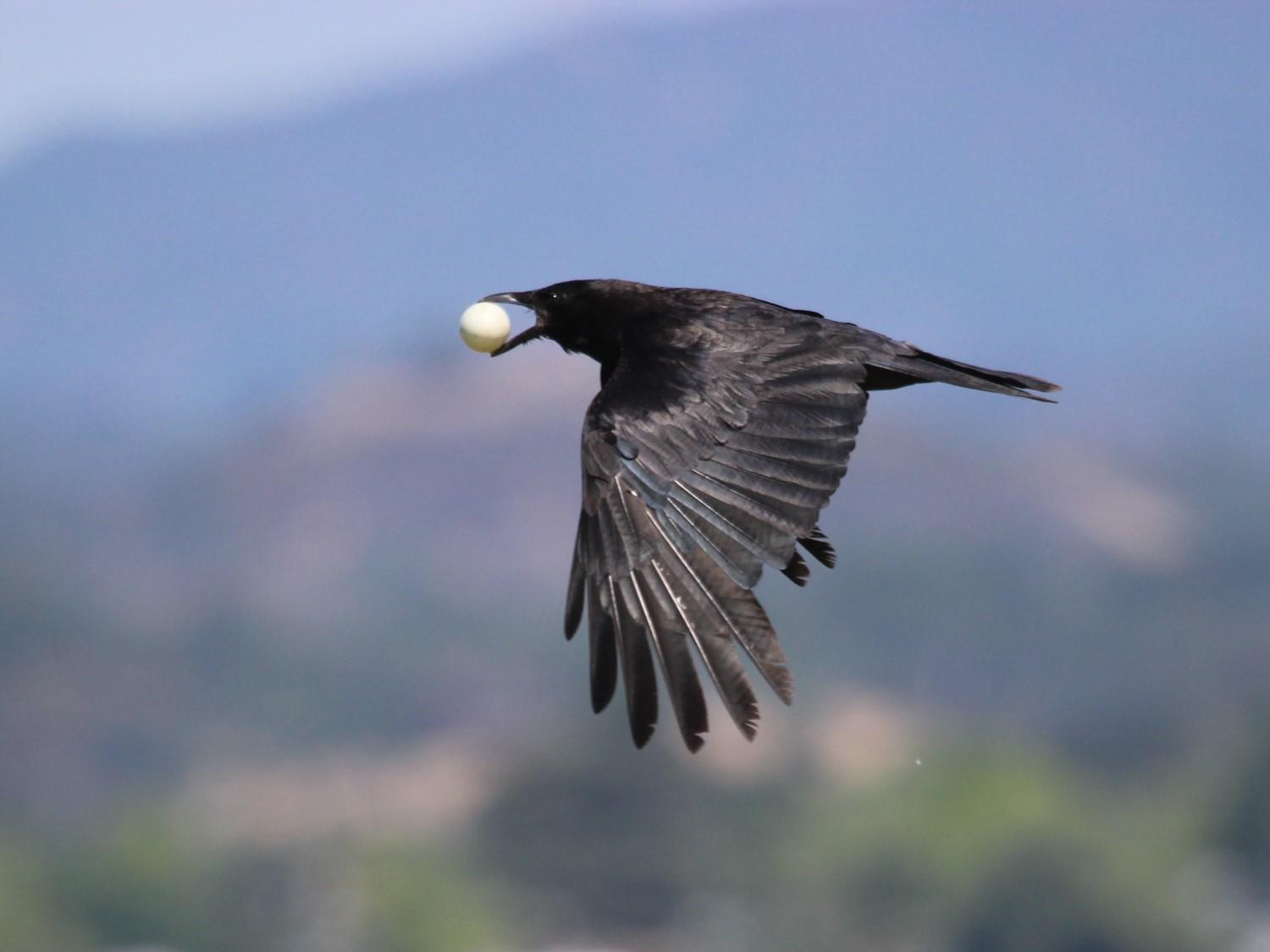
Still, there is good news to report. Lake Almanor, an Important Bird Area (IBA), had the largest breeding colony in California this season. Chapter volunteers organized and led over twenty public speaking and outreach events that reached hundreds of future and current grebe conservationists. Additionally, wildlife cameras, paid for and managed by the project participants, captured some exciting and newly recorded grebe behavior.
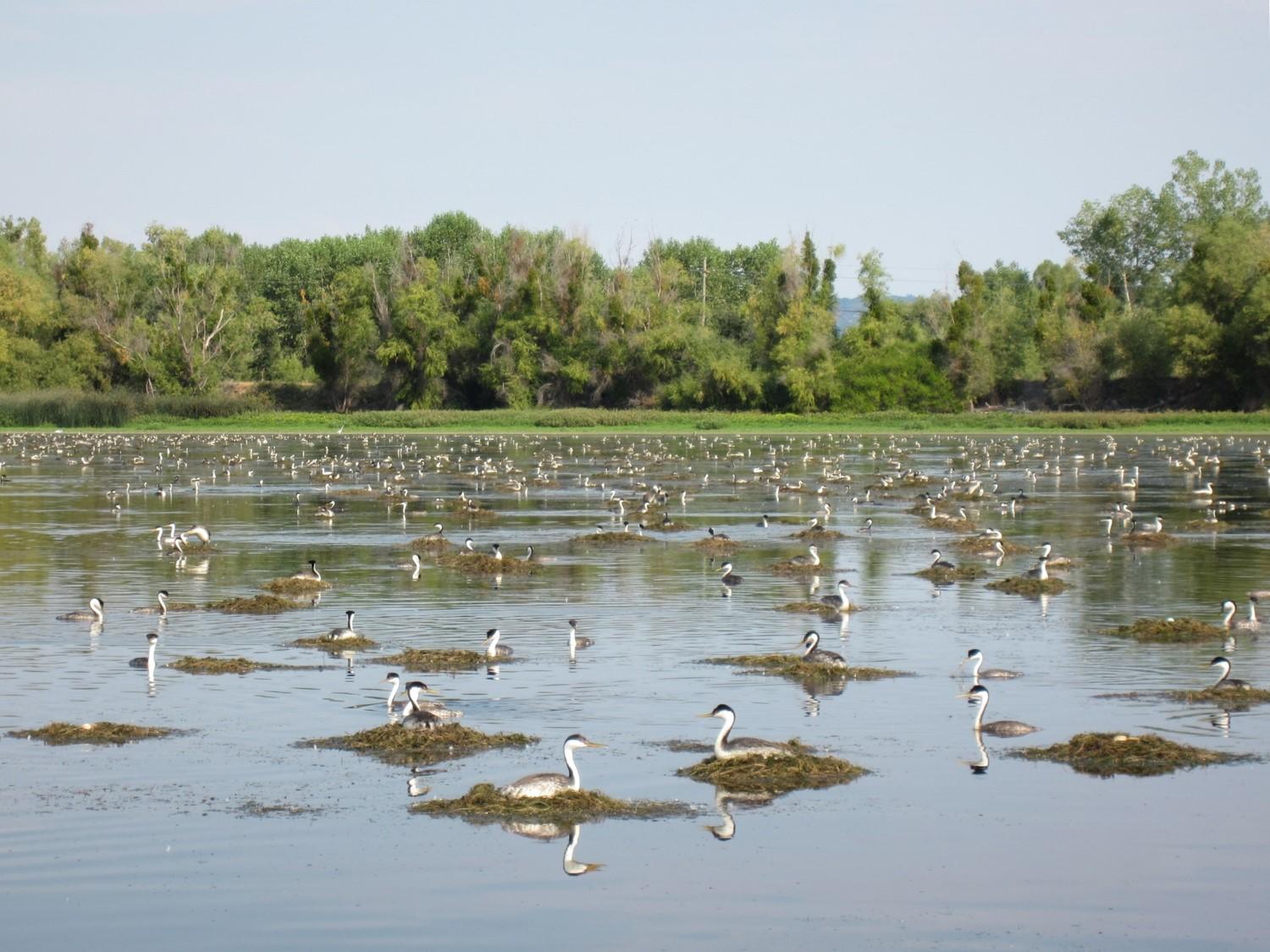
There is also a bit of bad news, despite 5,936 nesting attempts during the previous breeding season at Clear Lake, there were only 888 successful nesting attempts this past summer—one of the lowest on record. We think lack of forage fish may have something to do with it. Grebes have great instincts, and if they aren’t finding enough food for their chicks they will abandon their nest and move on. Unfortunately we cannot ameliorate this situation easily.
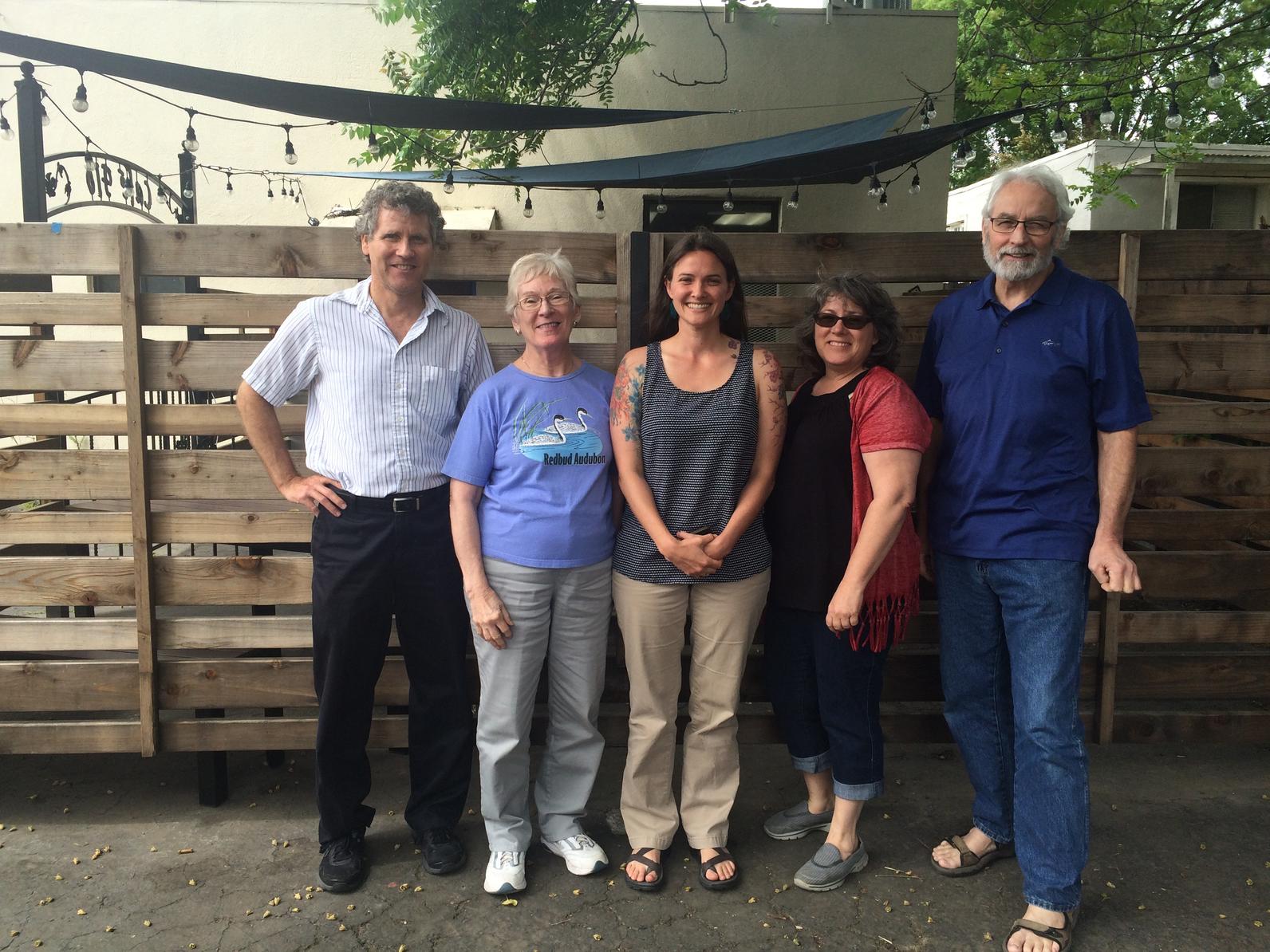
However, through the many volunteer hours put towards yearly surveys and outreach we can gain important insight into the difficulties grebes face so that we can be prepared when there is an opportunity to intervene. Our partnership is ever vigilant and we hope to ensure that grebe colonies continue to function in healthy waters with minimal disturbance.
Interested in getting involved? Reach out to your local Audubon chapter, or make a trip up north to Plumas Audubon Societies first annual Grebe Festival. Details below:

Thank you to the Luckenbach Trustee Council, NOAA, and NFWF for supporting this exciting and important project throughout the years.
